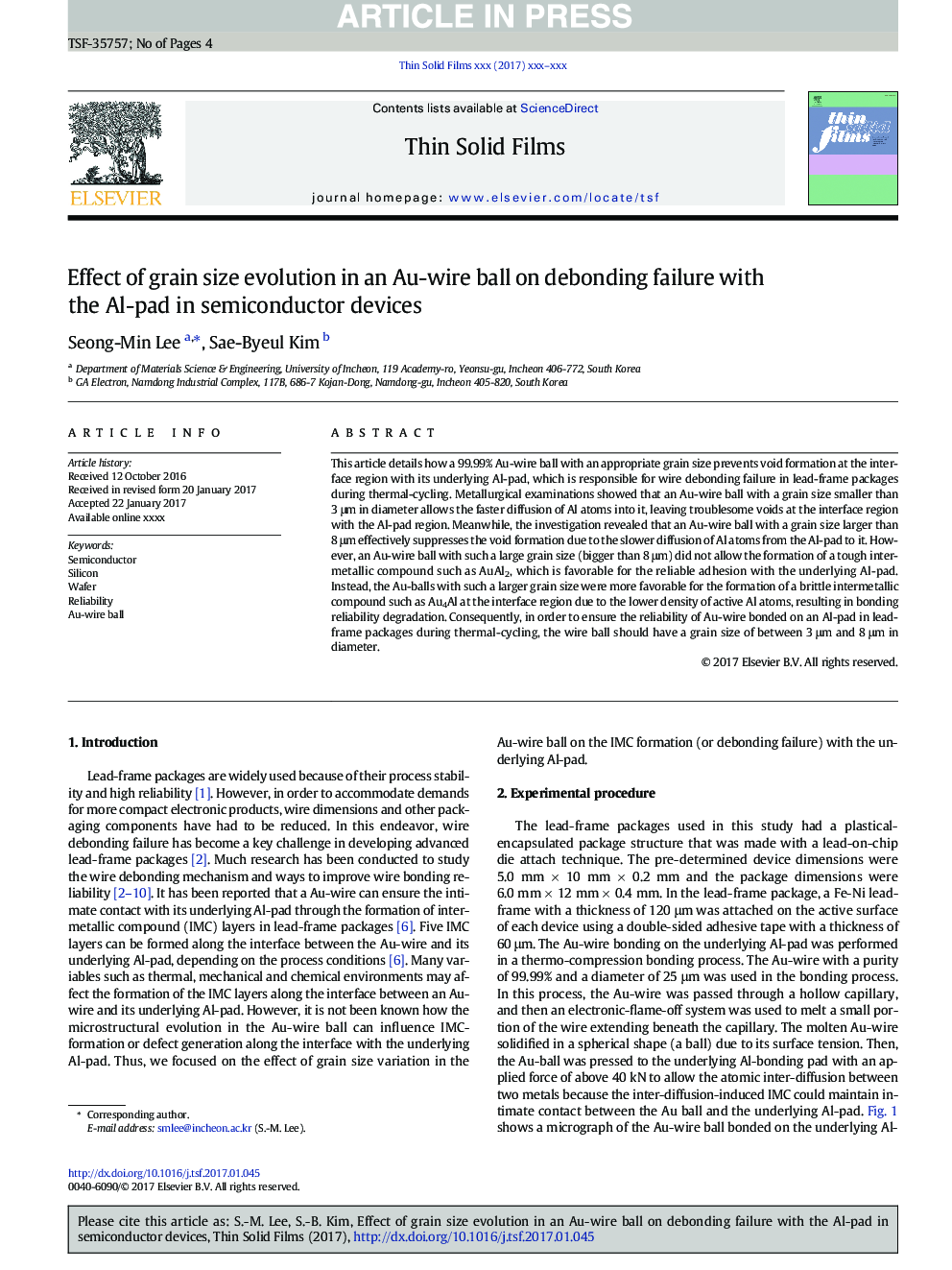| Article ID | Journal | Published Year | Pages | File Type |
|---|---|---|---|---|
| 8033381 | Thin Solid Films | 2017 | 4 Pages |
Abstract
This article details how a 99.99% Au-wire ball with an appropriate grain size prevents void formation at the interface region with its underlying Al-pad, which is responsible for wire debonding failure in lead-frame packages during thermal-cycling. Metallurgical examinations showed that an Au-wire ball with a grain size smaller than 3 μm in diameter allows the faster diffusion of Al atoms into it, leaving troublesome voids at the interface region with the Al-pad region. Meanwhile, the investigation revealed that an Au-wire ball with a grain size larger than 8 μm effectively suppresses the void formation due to the slower diffusion of Al atoms from the Al-pad to it. However, an Au-wire ball with such a large grain size (bigger than 8 μm) did not allow the formation of a tough intermetallic compound such as AuAl2, which is favorable for the reliable adhesion with the underlying Al-pad. Instead, the Au-balls with such a larger grain size were more favorable for the formation of a brittle intermetallic compound such as Au4Al at the interface region due to the lower density of active Al atoms, resulting in bonding reliability degradation. Consequently, in order to ensure the reliability of Au-wire bonded on an Al-pad in lead-frame packages during thermal-cycling, the wire ball should have a grain size of between 3 μm and 8 μm in diameter.
Keywords
Related Topics
Physical Sciences and Engineering
Materials Science
Nanotechnology
Authors
Seong-Min Lee, Sae-Byeul Kim,
